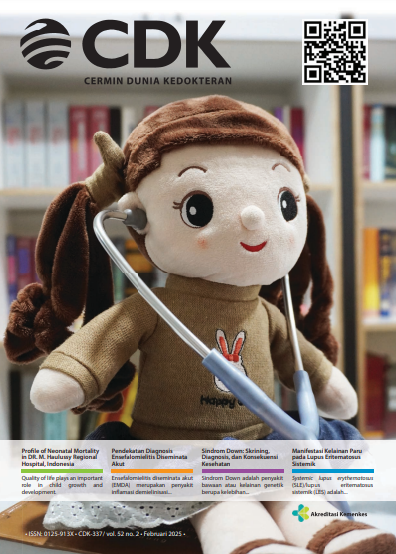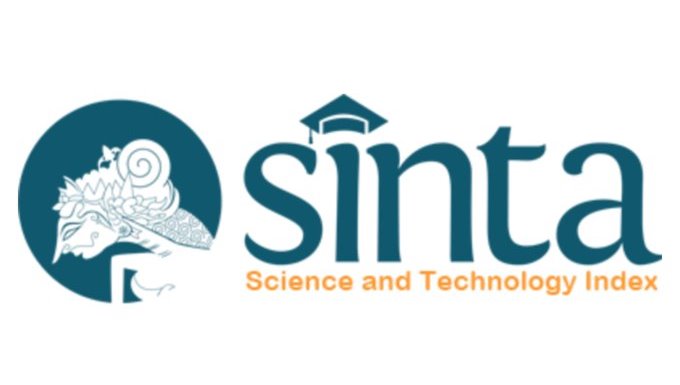D-dimer as a Diagnostic Biomarker of Pulmonary Tuberculosis in Pleural Effusion
Literature Review
DOI:
https://doi.org/10.55175/cdk.v52i2.1242Keywords:
Biomarker, D-dimer, pleural effusion, tuberculosisAbstract
Background: Tuberculosis (TB) remains a major health threat, especially in developing countries. Although the lungs are the most affected organ, systemic manifestations are quite significant. D-dimer, as one of the fibrin degradation products and also an indicator of coagulation activity, has been extensively researched for its predictive and diagnostic value in various diseases. This study aims to assess the effectiveness of D-dimer as a diagnostic biomarker for pulmonary tuberculosis (TB) in patients with pleural effusion compared to those with non-TB pleural effusion. Methods: The study was conducted as an observational case-control on 64 patients with pulmonary TB with pleural effusion were compared to 64 non-TB subjects with pleural effusion. Result: In the TB patient group, 62.5% of patients were smokers, 46.9% of patients had been exposed to TB. Patients were assessed based on the TB symptom scale and with radiological lung examinations, either x-rays or CT scans. D-dimer levels were correlated with the TB severity. D-dimer levels above the threshold value were significantly higher in patients with severe TB symptoms. Conclusion: A direct correlation was observed between the size of radiological lung lesions and D-dimer levels. The average D-dimer level in the control group was 220 ± 60 ng/mL, which increased to 450 ± 90 ng/mL in TB patients with severe lesions.
Downloads
References
Yadav J, Verma S, Chaudhary D, Jaiwal PK, Jaiwal R. Tuberculosis: Current status, diagnosis, treatment and development of novel vaccines. Curr Pharm Biotechnol. 2019;20(6):446-58. DOI: 10.2174/1389201020666190430114121.
Bansal R, Sharma D, Singh R. Tuberculosis and its treatment: An overview. Mini Rev Med Chem. 2018;18(1):58-71. DOI: 10.2174/1389557516666160823160010.
Dentan C, Epaulard O, Seynaeve D, Genty C, Bosson JL. Active tuberculosis and venous thromboembolism: Association according to international classification of diseases, ninth revision hospital discharge diagnosis codes. Clin Infect Dis. 2014;58(4):495-501. DOI: 10.1093/cid/cit780.
Adam SS, Key NS, Greenberg CS. D-dimer antigen: Current concepts and future prospects. Blood 2009;113(13):2878-87. DOI: 10.1182/blood-2008-06-165845.
Prihatni D, Supriatin L, Suraya N, Andriyoko B. The Correlation between Interleukin-6 and D-dimer in Severe and Critical COVID-19 Patients. Indonesian Journal of Clinical Pathology and Medical Laboratory. 2024;31(1):44-49. DOI: https://www.doi.org/10.24293/ijcpml.v31i1.2263.
Cudahy PGT, Warren JL, Cohen T, Wilson D. Trends in c-reactive protein, d-dimer, and fibrinogen during therapy for HIV-Associated multidrugresistant tuberculosis. Am J Trop Med Hyg. 2018;99(5):1336–41. DOI: 10.4269/ajtmh.18-0322.
Li X, Qin Y, Ye W, Chen X, Sun D, Guo X, et al. Diagnostic performance of D-dimer in predicting pulmonary embolism in tuberculous pleural effusion patients. BMC Pulm Med. 2021;21(1):177. DOI: 10.1186/s12890-021-01546-y.
Schaaf HS, Zumla A. Tuberculosis: A comprehensive clinical reference. Saunders Elsevier; 2009.
Amer S, El Hefnawy A, Abdel Wahab N, Okasha H, Baz A. Evaluation of different laboratory methods for rapid diagnosis of tuberculous pleurisy. Int J Mycobacteriol. 2016;5(4):437-45. DOI: 10.1016/j.ijmyco.2016.07.001.
Luies L, du Preez I. The echo of pulmonary tuberculosis: Mechanisms of clinical symptoms and other disease-induced systemic complications. Clin Microbiol Rev. 2020;33(4):e00036-20. DOI: 10.1128/CMR.00036-20.
Gusev E, Sarapultsev A. Atherosclerosis and inflammation: Insights from the theory of general pathological processes. Int J Mol Sci. 2023;24(9):7910. DOI: 10.3390/ijms24097910.
Akkök B, Yurt S, Yiğitbaş BA, Uzun H, Koşar F. Pleural effusion and plasma levels of fibrinolytic parameters in tuberculosis pleurisy and contribution to the diagnosis. Eurasian J Pulmonol. 2014;16:84-8. DOI: https://dx.doi.org/10.5152/ejp.2014.15010.
Idell S. Coagulation, fibrinolysis, and fibrin deposition in acute lung injury. Crit Care Med. 2003;31(4):S213-20. DOI: 10.1097/01.CCM.0000057846.21303. AB.
Matveychuk A, Rashid G, Fridman Z, Guber A, Shitrit D. Pleural ELFA D-dimer assay: A surrogate marker for malignant pleural effusion. Thromb Res. 2012;129(5):648-51. DOI: 10.1016/j.thromres.2011.07.036.
Ali A, Waris A, Khan MA, Asim M, Khan AU, Khan S, et al. Recent advancement, immune responses, and mechanism of action of various vaccines against intracellular bacterial infections. Life Sci. 2023;314:121332. DOI: 10.1016/j.lfs.2022.121332.
Baindara P. Host-directed therapies to combat tuberculosis and associated non-communicable diseases. Microb Pathog. 2019;130:156-68. DOI: 10.1016/j.micpath.2019.03.003.
D'Asti E, Meehan B, Rak J. Studies on the Tumor Vasculature and Coagulant Microenvironment. Methods Mol Biol. 2016;1458:39-58. DOI: 10.1007/978-1-4939-3801-8_4
Ducati RG, Ruffino-Netto A, Basso LA, Santos DS. The resumption of consumption: A review on tuberculosis. Mem Inst Oswaldo Cruz. 2006;101(7):697-714. DOI: 10.1590/s0074-02762006000700001.
Kanipe C, Palmer MV. Mycobacterium bovis and you: A comprehensive look at the bacteria, its similarities to Mycobacterium tuberculosis, and its relationship with human disease. Tuberculosis 2020;125:102006. DOI: 10.1016/j.tube.2020.102006.
Mir MA, Mir B, Kumawat M, Alkhanani M, Jan U. Manipulation and exploitation of host immune system by pathogenic Mycobacterium tuberculosis for its advantage. Future Microbiol. 2022;17:1171-98. DOI: 10.2217/fmb-2022-0026.
World Health Organization. Global tuberculosis report 2020. Geneva: WHO; 2020.
Eze TO, Nwadinigwe FC, Ameh GM. Treatment outcome of tuberculosis cases and HIV co-infected patients. A retrospective study at a federal medical centre of North Central Nigeria. J Epidemiol Kes Komunitas. 2023;8(1):6-13. DOI: https://doi.org/10.14710/jekk.v8i1.17221.
Lelisho ME, Wotale TW, Tareke SA, Alemu BD, Hassen SS, Yemane DM, et al. Survival rate and predictors of mortality among TB/HIV coinfected adult patients: Retrospective cohort study. Sci Rep. 2022;12(1):18360. DOI: 10.1038/s41598-022-23316-4.
Downloads
Published
How to Cite
Issue
Section
License
Copyright (c) 2025 Reza Aditya Digambiro

This work is licensed under a Creative Commons Attribution-NonCommercial 4.0 International License.





















